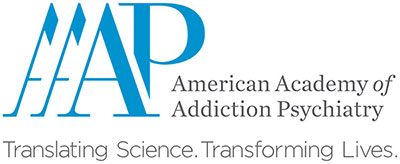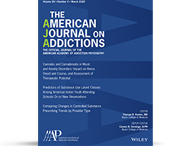
Integrative Approaches to Adolescent Addiction psychiatry: A Case Study on Treating a 16-Year-Old with Buprenorphine for Addiction Recovery
Chairperson: Lorelys Arroyo Rivera, MD, Gateway Behavioral Health, CSB
Presenters: Zuleimye Valle, MD, MPH, Child and Adolescent Psychiatry Fellow, Gateway Behavioral Health, CSB
A 16-year-old male with a history of opioid use disorder and sedative/hypnotic anxiolytic use disorder presents to our child and adolescent psychiatry clinic to establish care following a recent inpatient hospitalization for an unintentional benzodiazepine overdose two months ago. The patient was referred by a community pediatrician who initiated Medication for Opioid Use Disorder (MOUD) with immediate-release Buprenorphine.
The patient began MOUD at age 14 after sustaining a gunshot wound to his left knee. He reports experiencing consistent “neuropathic pain” and is requesting more Pregabalin for relief. Additionally, he seeks medication for ADHD, as he currently uses a friend’s prescription stimulant to help wake up in the morning for work. The patient also smokes marijuana at night to assist with sleep.
He has had multiple hospitalizations and one rehabilitation service that tapered his Buprenorphine therapy over two weeks. The patient is now hesitant to return to rehab and is requesting medications for anxiety and pain. His father manages all his medications, keeping them in a locked safe, and asks, “Will my son ever be okay?”
The patient reports significant anxiety in public places and wants an increase in his Clonidine and Pregabalin, as well as other depressants. He describes constant anxiety in public, fearing another gunshot wound. He also experiences nightmares and seeks medication to help with sleep. He denies any history of mania, psychosis, or personality disorders at this time. He states that Buprenorphine helps him but admits to craving heroin currently. He occasionally forgets to take his medications unless his father manages them.
This case highlights the importance of addressing multiple factors in treatment, including psychosocial aspects. Educating and treating the family can significantly impact the outcomes for a developing adolescent male with immature coping skills for substance use. Navigating the systemic and clinical duality of treating this patient from both child and adolescent psychiatry and addiction psychiatry perspectives is crucial for establishing a therapeutic relationship, which is vital for medication adherence, harm reduction, and improving quality of life. Additionally, there is a scarcity of resources available to this population without stigma.
Case Highlights
- Treatment of Opioid Use Disorder (inc MOUD) in adolescents
- Family involvement/developmental stages/autonomy in SUD treatment for adolescents –
- Treatment of trauma/PTSD in Adolescents
Learning Objectives
- As the primary provider how can I address family member who attempts to control his child’s addiction illness and treatment? This question will help explore the sense of autonomy often lost to drugs and parenting and the lack of control in certain areas.
- What is the role of long acting MOUD in this population, especially without FDA approval for underage patients.
- What is the role of comorbid PTSD in adolescence and what are some treatment recommendations.
- What are the recommendations from the experts for early career addiction psychiatrists that encounter difficult new cases with minimal clinical data published?



